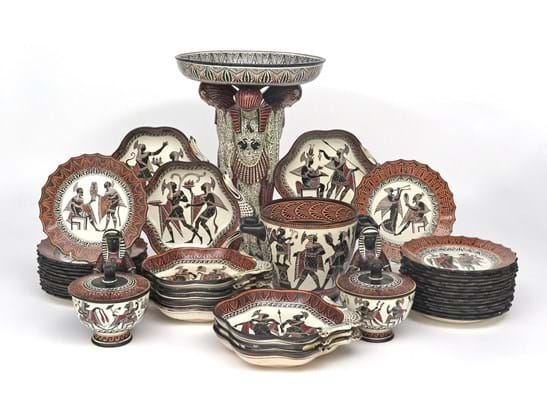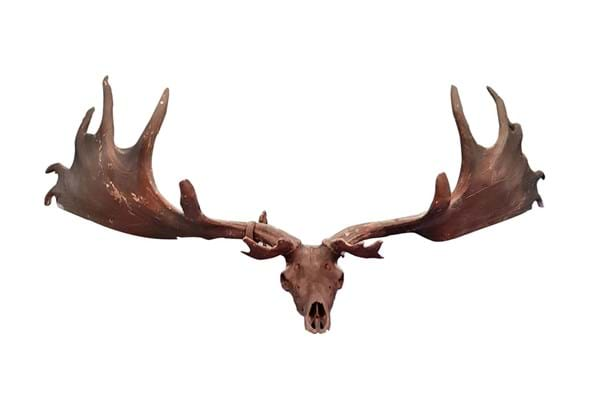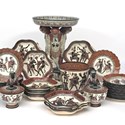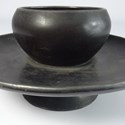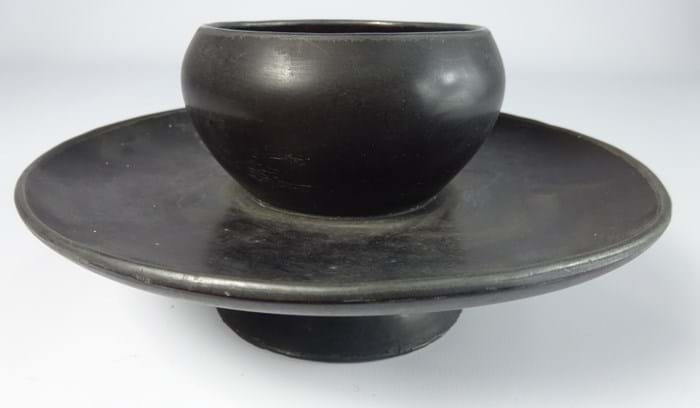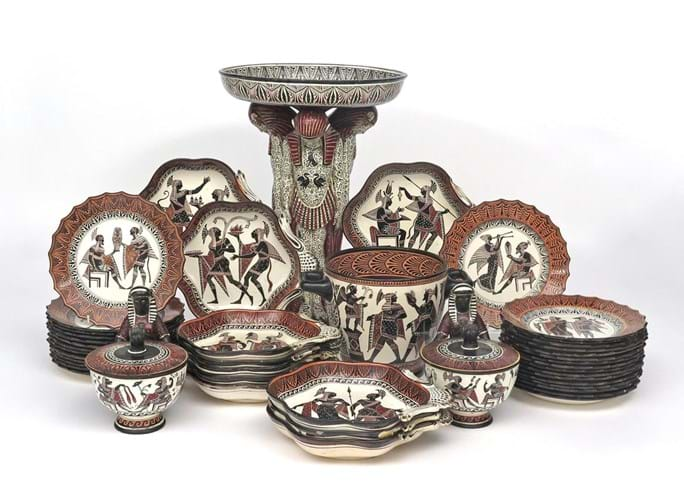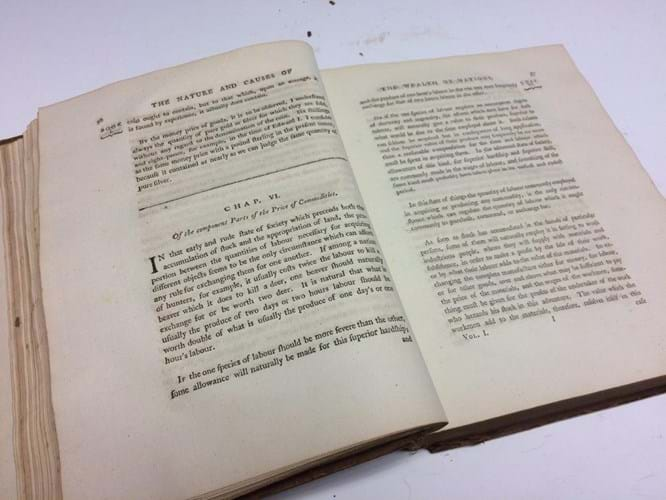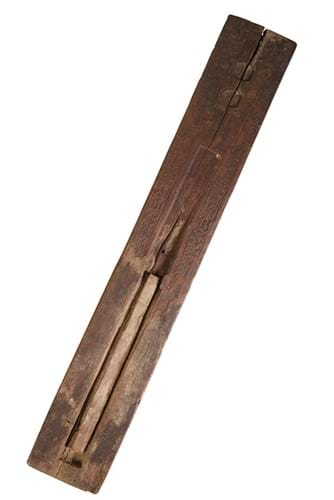1. Japanese black lacquer cup
Roger Soame Jenyns (1904-76), a renowned British art historian, collector and connoisseur, was a well-known figure in the field of east Asian art.
He was assistant keeper of Oriental antiquities at the British Museum from 1931-67 and wrote several definitive books on Chinese and Japanese ceramics. Now out of print, some of these works change hands for over 30 times their original cost, a sign of their enduring practical value.
By order of the executors of his younger son, the late John Jenyns, Christie’s will be selling much of his collection next month with 24 lots included in the Fine Chinese Ceramics and Works of Art sale on November 6, alongside 138 lots in a dedicated online sale from November 1-8.
However, buyers were given an early taste of this offering at the new Duggleby Stephenson saleroom in York on October 12. The residual contents of the Soame Jenyns collection presented here included two sleepers: a Japanese black lacquer cup stand (estimate £50-80) and a lot comprising both a white and russet jade archer’s thumb ring and a 10in (25cm) spinach jade shallow dish with a Qianlong four character mark (estimate £200-300)
In the belief that the former (pictured above) was 16th century, it took £23,000 (plus 21% buyer’s premium), while the latter, dated to the mid 18th century, made £18,000.
2. Grecian Revival creamware dinner service
The Giustiniani factory, established in Naples in the second half of the 18th century by a family of potters under the management of Biagio Giustiniani, become famous for its products inspired by the excavated wares of Pompeii and Herculaneum.
Some of the factory’s utilitarian creamwares are particularly spectacular, as evidenced by the part dinner service offer by Woolley & Wallis in Salisbury on October 16. Around 30 of the 48 pieces were plates but the suite included a spectacular comport or centrepiece resting on the heads of three figures wearing Egyptian-style headresses. The other pieces were decorated in the Grecian Revival manner with figures and animals at various pursuits, in black and red. Estimated at £1000-2000, the hammer price was £21,000 (plus 25% buyer’s premium).
3. Wealth of Nations
On October 15 Derbyshire auction house Hansons sold a first edition of Adam Smith’s Wealth of Nations for £65,000 (plus 20% buyer’s premium). The two-volume work, properly titled Inquiry into the Nature and Causes of the Wealth of Nations, had been found among the contents of Bishton Hall, at Wolseley Bridge, near Stafford, home to the Stafford Northcote family and a prep school since 1946.
Hilary Stafford Northcote said the family were aware of the books’ existence but had been unable to pinpoint where in the house the books were kept.
The Wealth of Nations, penned by Scottish economist and moral philosopher Smith over a 10-year period, lays out the principles of capitalism and the foundation of modern economic thought.
When first published by London firm Strahan and Cadell in 1776 it cost £1 16 shillings with the first edition running to around 2000 copies.
This copy was in its original, but defective, half calf binding.
First editions do occasionally appear at auction. Another copy previously belonging to the 2nd Earl of Rosslyn was sold by Lyon & Turnbull in Edinburgh in 2013 for £46,000 (plus 25% buyer’s premium) while another offered at Bonhams in 2017 took £55,000 (plus 25% buyer’s premium).
4. Egyptian carved wood palette
Estimated at up to £500, this ancient Egyptian carved wood palette sold for £15,000 at Duke’s of Dorchester on October 11.
Across its 18in (41cm) length, a hieroglyphic inscription references the reign of Thutmose III and an accompanying note reading 'the boon (or gift) that the king gives' and 'belonging to an overseer of scribes'.
Thutmose III was the sixth pharaoh of the Eighteenth Dynasty and arguably ancient Egypt’s greatest military leader. He is recorded to have captured 350 cities during his rule and conquered much of the Near East from the Euphrates to Nubia during 17 known campaigns.
5. Giant Irish deer antlers and skull
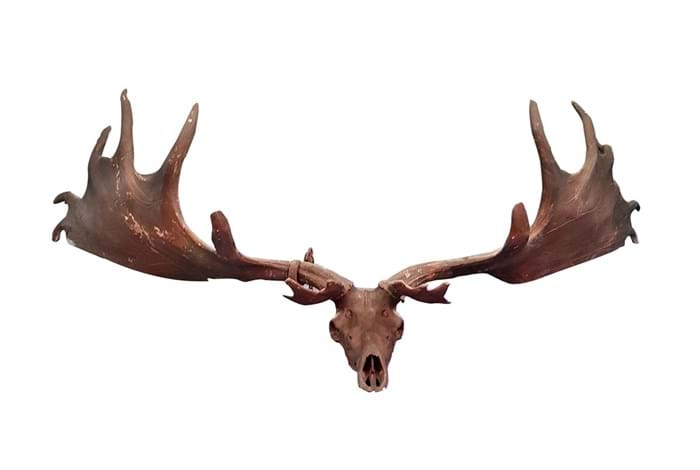
This set of antlers and skull from a giant Irish deer, c.12,000-8000 BC, with a span of over 9ft (2.9m), sold at Adam's.
The giant Irish deer or Megaloceros giganteus was, as the Latin name suggests, far and away the largest deer that ever lived. Standing up to 7ft tall at the shoulders, they originated during the Pleistocene Period and roamed from Ireland in the west to Siberia in the east. It is thought that the climatic changes following the Ice Age may have contributed to their eventual demise.
Helped by the preserving qualities of the bogland, over the centuries the prehistoric remains of the giant Irish deer have been discovered in Waterford, Cork and Clare. Following an age-old fashion, many were displayed in baronial banquet halls.
This set of antlers and skull, c.12,000-8000 BC, with a span of over 9ft (2.9m), have been associated with the clan O’Brien at Dromoland Castle since the late 17th century. It came for sale at the country house sale held by Adam’s in Townley Hall, Drogheda, Co Louth on October 16, by descent to the current Lord Inchiquin, 18th Baron. Estimated at €30,000-50,000, it sold towards the top of expectations at €47,000 (plus 20% buyer’s premium).


